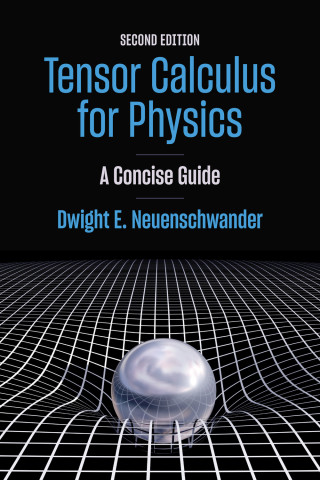
Reviews
Like any good textbook that is intended for the purpose of teaching a course, there are numerous problems at the end of each chapter of varying degrees of difficulty.
John Charap succeeds well in making electrodynamics manifestly covariant, providing historical background and applications of far-reaching importance. The diligent reader, armed with pen and ample scratch paper for filling in the intermediate steps, will see covariant electrodynamics emerge coherently.
Book Details
Preface
1. Introduction
2. Mathematical Preliminaries
2.1. A Reminder of Vector Calculus
2.2. Special Relativity
2.3. Four-Vectors
2.4. Covariant and Contravariant Vectors
2.5. Tensors
2.6. Time Dilation and
Preface
1. Introduction
2. Mathematical Preliminaries
2.1. A Reminder of Vector Calculus
2.2. Special Relativity
2.3. Four-Vectors
2.4. Covariant and Contravariant Vectors
2.5. Tensors
2.6. Time Dilation and the Lorentz-FitzGerald Contraction
2.7. The Four-Velocity
2.8. Energy and Momentum
2.9. Plane Waves
2.10. Exercises for Chapter 2
3. Maxwell's Equations
3.1. Our Starting Point
3.2. The Experimental Background
3.2.1. Coulomb's Law
3.2.2. Absence of Magnetic Monopoles
3.2.3. Ørsted and Ampere
3.2.4. The Law of Biot and Savart
3.2.5. The Displacement Current
3.2.6. Faraday's Law of Induction
3.2.7. The Lorentz Force
3.3. Capacitors and Solenoids
3.3.1. Energy
3.4. Electromagnetic Waves
3.4.1. Polarization
3.4.2. Electromagnetism and Light
3.5. Exercises for Chapter 3
4. Behavior under Lorentz Transformations
4.1. The Charge-Current Density Four-Vector
4.2. The Lorentz Force
4.3. The Potential Four-Vector
4.4. Gauge Transformations
4.5. The Field-Strength Tensor
4.6. The Dual Field-Strength Tensor
4.7. Exercises for Chapter 4
5. Lagrangian and Hamiltonian
5.1. Lagrange's Equations
5.2. The Lagrangian for a Charged Particle
5.3. The Hamiltonian for a Charged Particle
5.4. The Lagrangian for the Electromagnetic Field
5.5. The Hamiltonian for the Electromagnetic Field
5.6. Noether's Theorem
5.7. Exercises for Chapter 5
6. Stress, Energy, and Momentum
6.1. The Canonical Stress Tensor
6.2. The Symmetrical Stress Tensor
6.3. The Conservation Laws with Sources
6.4. The Field as an Ensemble of Oscillators
6.5. Exercises for Chapter 6
7. Motion of a Charged Particle
7.1. Fields from an Unaccelerated Particle
7.2. Motion of a Particle in an External Field
7.2.1. Uniform Static Magnetic Field
7.2.2. Crossed E and B Fields
7.2.3. Nonuniform Static B-Field
7.2.4. Curved Magnetic Field Lines
7.3. Exercises for Chapter 7
8. Fields from Sources
8.1. Introducing the Green's Function
8.2. The Delta Function
8.3. The Green's Function
8.4. The Covariant Form for the Green's Function
8.5. Exercises for Chapter 8
9. Radiation
9.1. Potentials from a Moving Charged Particle
9.2. The Lienard-Wiechert Potentials
9.2.1. Fields from an Unaccelerated Particle
9.2.2. Fields from a Charged Oscillator
9.3. The General Case
9.4. The Multipole Expansion
9.4.1. Electric Dipole Radiation
9.4.2. Magnetic Dipole and Higher-Order Terms
9.5. Motion in a Circle
9.6. Radiation from Linear Accelerators
9.7. Radiation from an Antenna
9.8. Exercises for Chapter 9
10. Media
10.1. Dispersion
10.1.1. Newton on the "Phænomena of Colours"
10.2. Refraction
10.2.1. The Boundary Conditions at the Interface
10.3. Cerenkov Radiation
10.4. Exercises for Chapter 10
11. Scattering
11.1. Scattering from a Small Scatterer
11.2. Many Scatterers
11.3. Scattering from the Sky
11.3.1. The Born Approximation
11.3.2. Rayleigh's Explanation for the Blue Sky
11.4. Critical Opalescence
12. Dispersion
12.1. The Oscillator Model
12.1.1. The High-Frequency Limit
12.1.2. The Drude Model
12.2. Dispersion Relations
12.3. The Optical Theorem
Epilogue
Index





